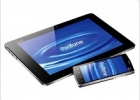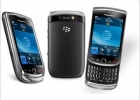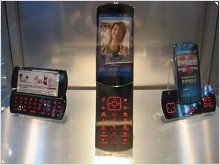CHIBA, Japan--If the concepts on display at Ceatec are any indication, completely deconstructing the traditional form factor of the mobile phone is one of the next major phases of design and development research.
Japan has one of the most robust mobile phone cultures anywhere, and it shows here on the second day of the show. Sharp, Fujitsu, NTT DoCoMo, and KDDI each had intriguing takes on the next form factor for devices used not just for mobile communication, but watching videos, playing games, and performing mobile navigation.
Take the necklace on the right. It alerts the wearer when there's a call or a message incoming. It's made by Fujitsu and, while it isn't an actual product, is indicative of how cell phones are thought of here: not just communication devices, but accessories made to fit neatly and inconspicuously into the daily routine.
Then there were a host of phones whose screens and keyboards pull apart to be used separately. The Fujitsu version shown below uses magnets to connect the two pieces in the desired configuration. NTT DoCoMo was demonstrating a similar concept.
But as far as futuristic, elegant design goes, KDDI was far and away the winner. The wireless company showed off beautiful designs, which are nowhere close to being reality, but show the aspirations it has for the cell phone. The Ply was part of its yearly Design Project. (Here's a picture of last year's version.)
Designed by Hideo Kambara, the Ply imagines the phone as a device with a series of layers. One layer is a pop-up projector, another is a slide-out keyboard, and another is a printer, a game controller, and so on. The ones on display here and shown further down the page are just papercraft renderings.






















